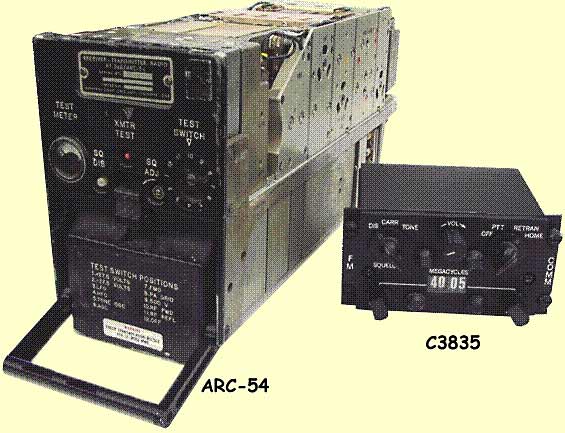

Carl Betsill
(ARC 51, ARC 54, ARC 102, ARC 115, ADF, SCAS) (updated 19Mar2019)
.....................................................................................................................................................................................
Avionics Equipment: F-Troop, 4th Air Cav, Lai Khe, Vietnam, 1971-72
As Avionics Mechanics (35K20) with the Centaurs it was our job to maintain any system with tubes or transistors on board the unit’s aircraft.Another Military Occupation Specialty (MOS) was Aircraft Electrician. Although a similar MOS they maintained electrical systems not involving electronic components like ignition systems, lighting etc.
Avionics in each of the three types of aircraft (UH-1H, AH1G, OH-6A) were similar but slightly different. All had three types of communication radios. The first was a UHF radio on the AM band operating at 225-400 MHz. This radio was the same for all aircraft types and used the ARC-51 transceiver with the C-6287 control head. This radio had both tubes and transistors and was extremely large and heavy for an aircraft radio.
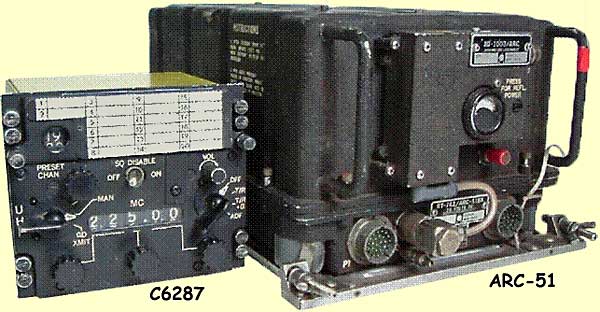
The ARC-51 in the Cobra equipped with the 20mm cannon had the most problems. The vibration was too much for the tubes. This radio was located in the tail boom of the Cobra in an access panel just below the exhaust outlet. The radios were designed to be secured with safety wire, but that was seldom employed. On one occasion I remember and ARC-51 in a Cobra coming undone from its mount and flopping loose in the tail boom held only by the electrical cables.
The ARC-51 in the Loach was mounted in the back passenger compartment on the floor.
The Huey (Slicks) had plenty room for mounting in the radio compartment in the nose if I remember correctly.
The next type of radio was the FM in the 30-70 MHz range. This radio model varied between the ARC-54 (with control head C3835) in the slicks and the Standard Lightweight Avionics Equipment in the OH-6A’s and the Cobras.
Because they contained tubes, the ARC-51 and the ARC-54 gave us the most trouble.
The third communication radio was the VHF AM radio in the 116-150 MHz range. The slicks used an older ARC-134 while the cobras and loaches used the new solid-state ARC-115. The ARC-115 was part of the Standard Lightweight Avionics Equipment series and required very little maintenance.
 The Slicks were also equipped with a KY-28 voice encryption device. This was an analog device with very poor quality voice decryption. When the device, which was connected to the FM radio, was turned on everyone sounded like Donald Duck. Each day, someone from Avionics with a Secret Security Clearance would have to key each device. This was usually done by SP5 Felix Marcano. He would get the code card from HQ each morning. The card looked like an IBM punch card. He would line up the pins in the Key with the holes in the punch card, and then push the key into each KY-28.
The Slicks were also equipped with a KY-28 voice encryption device. This was an analog device with very poor quality voice decryption. When the device, which was connected to the FM radio, was turned on everyone sounded like Donald Duck. Each day, someone from Avionics with a Secret Security Clearance would have to key each device. This was usually done by SP5 Felix Marcano. He would get the code card from HQ each morning. The card looked like an IBM punch card. He would line up the pins in the Key with the holes in the punch card, and then push the key into each KY-28.
I remember having to work on the system once. I got out the Technical Manual to look at the wiring diagram and most of the manual was blank! Apparently wiring problems had to be resolved at a higher level of maintenance than a 35K20. It was reliable however and we never sent one up for higher echelon maintenance. A straight device replacement usually solved the problem. We were told never to open the case as the internal parts would be destroyed. I never tried it to find out. I suspect it was probably just more Army BS however.
The only real problem this device caused was with newby pilots. A pilot, new in country, would inevitably get in one of the slicks run it up and then check the FM radio. The radio would not power up so he would call HQ for them to send an Avionics guy “ASAP”. What the Newby didn’t know was that the KY-28 power switch had to be on before the FM radio would power up. It was a standing joke among Avionics Mechanics. A fix required a reach across the Newby’s lap and flipping up a switch instantly resolving the problem much to the embarrassment of the new pilots. We never tired of embarrassing newbys, pilots or not.
The next most popular piece of Avionics was the Automatic Direction Finder (ADF) operating in the 190-1750 KHz range. This happened to cover all AM radio stations playing music in-country. If the ADF went out the whole aircraft crew was unhappy, not because they used it that much for navigation, but it was entertainment. I probably worked on keeping ADF up and working more than any other piece of equipment. Certainly its malfunction was sure to be written up promptly in the log book with usually with a follow up by a concerned crew chief. To my best recollection we were using the ARN-83.
The older ADF in something like the O1-Birddog actually had a loop antenna that had to be manually rotated. The ARN-83 used a solid state antenna that automatically detected the direction of the signal and sent the information to a dial.
The IFF Transponder system (Identification Friend or Foe) was another avionics system. I don’t recall the nomenclature, but according to internet sources it was probably the C-6280. We did have several repairs on this equipment. The antenna was a very short blade on the underside of the aircraft as I recall.
Intercom and the ability to switch between FM, UHF, ADF and VHF radios was controlled by the C-1611 control head. A slick had at least 5 of these. One for each of the front seats, one for each door gunner position and one or more in the passenger cargo area. This is where the headsets were connected.
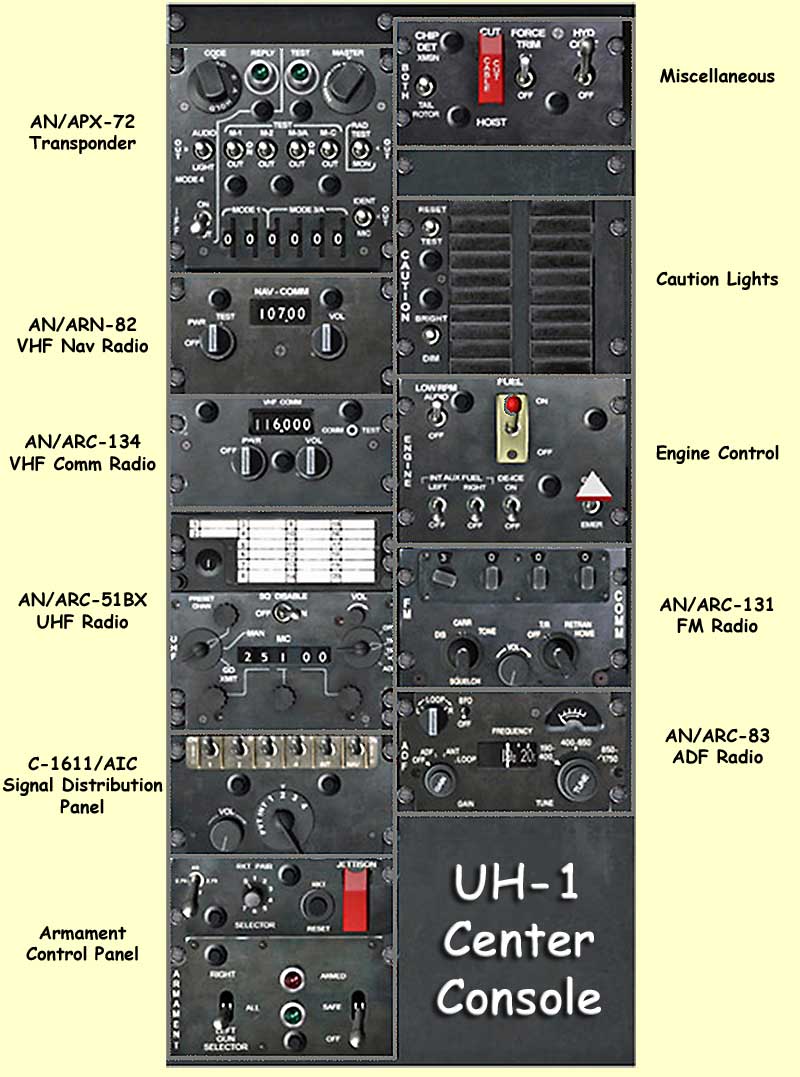
A very interesting piece of Avionics was the Stability Control Augmentation System (SCAS) on the Cobra. This was a partial “auto-pilot” type device that took over minor corrections for wind, guns firing and aided with hovering. Repairs other than wiring problems consisted of replacing one of three printed circuit cards. There was one for pitch, another for roll, and a third for yaw. The device was a black box directly back of the head of the rear seat pilot.
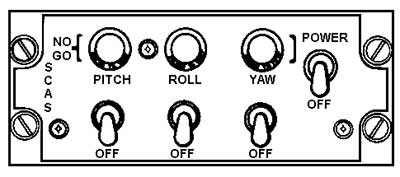
A similar device, called a Pitch Stability Control System (PSAS), was used on the CH-47 Chinook that occasionally came into to Lai Khe for repairs. I understand that the system was also on the Flying Crane, but I never got to work on one outside of Advance Individual Training (AIT).
The only other piece of avionics that I recall working on was the gyromagnetic compass set. You could always hear the gyro running up when you powered the system.
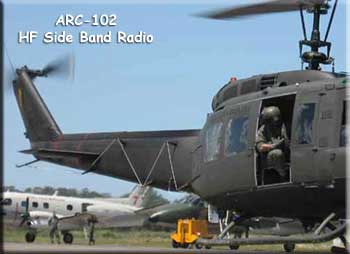 While not equipped in any of the Centaur ships, another radio that needs mentioning is the ARC-102 HF Side band radio. It could receive and transmit on AM, USB, LSB and CW on 28,000 channels. You could talk back to the states on this radio. Radio Frequency (RF) power was up to 400 watts. The antenna ran in a zig-zag pattern down the tail boom of a Huey with a caution signs to stay away from the antenna. This baby would fry you like you were in a microwave oven if you were too close. RF burns are especially nasty since they cook from the bone out. The radio was huge with an impedance matching unit almost as big as the radio itself.
While not equipped in any of the Centaur ships, another radio that needs mentioning is the ARC-102 HF Side band radio. It could receive and transmit on AM, USB, LSB and CW on 28,000 channels. You could talk back to the states on this radio. Radio Frequency (RF) power was up to 400 watts. The antenna ran in a zig-zag pattern down the tail boom of a Huey with a caution signs to stay away from the antenna. This baby would fry you like you were in a microwave oven if you were too close. RF burns are especially nasty since they cook from the bone out. The radio was huge with an impedance matching unit almost as big as the radio itself.
Many times battalion or higher would stop in to have their ARC-102 worked on. To own this would have been a HAM operators dream. I had one undocumented, but could find no way to ship it home.
Avionics mechanics were also responsible for repair of the tower radios. I don’t recall being called to the tower but twice, however. They must have had very reliable radios. I was called to the tower once in Lai Khe, and once in Chu Chi to help a former Avionics classmate de-charge the capacitor in the radio. This was done with a cable on a long wooden pole. It was pretty scary as I recall.
The most useful tool of the Avionics Mechanic’s trade was the multi-meter. With it you could read Ohms, voltage, and Amperage. The Ohm meter was the most useful for detecting shorts or breaks. Many times bullet damage to cables required many hours of careful wire matching and soldering work.
The other useful tool was my electrician’s pliers with wire cutter and wire stripper and electricians Knife with screwdriver. I bought my personnel set from a mama-san at the local dump since supply couldn’t seem to get them in stock. Other tools included a wattage meter to measure RF output.
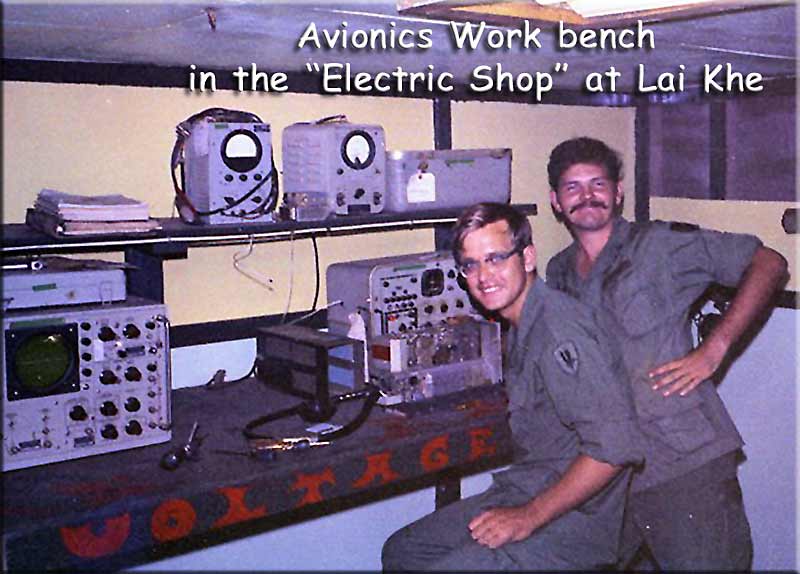
Bench work was a whole other side of Avionics work that included various test equipment and Oscilloscopes. This part of Avionics was handled by a different Avionics MOS. Above is a picture of our Avionics Work bench in the “Electric Shop” at Lai Khe. An ARC-54 with case removed is hooked up for testing. Because of the sensitivity of this equipment, the avionics shop was the only air-conditioned building on Lai Khe base!
Just in case you are wondering, training for an avionics mechanic was one of the more lengthy trainings offered for an enlisted man in AIT. That’s why I choose it. After several tries at finding an open slot in something related to my college training, in frustration, I went down the recruiters list of MOSs and picked the one I saw with the longest school. Eighteen weeks of training at Ft. Gordon Georgia. My hope was the war would be over by the time I finished AIT. No such luck! Training at Ft. Gordon included mock up aircraft of just about anything the Army flew. Switches were set to allow trainers to simulate wire breaks or shorts. It was truly and interesting and challenging MOS. In 1971 they were training three shifts and almost 100 percent of the recruits were headed for Vietnam. It seems that was where all the Army’s helicopters were at the time. Looking back if I had just volunteered as 11-Bush, my chances of going to Vietnam would have been almost zero.
19Mar2019: Gordon Hodgson (Avionics Mechanic 101st 69-70):
Hey you guys I was a 35L20 over there in 69-70 with the 101st. Your website really brought back memories. Oh, and my school lasted 19 weeks, gotcha by 1 week whoever was writing the narrative, maybe the 35K20 guy. Couple things of note, that pic of the Arc54 was kind of puzzling to me as I don’t think our 54’s had that faceplate with all the adjustments on it. Repair of the ARC-54 became my specialty. Other Troop's of the 2/17 Cav soon started sending their ’tough ones' over to me. The site mentioned the Arc-102. That brought back memories at Fort Gordon trying to learn how that thing worked. It about gave me fits and was my worst scoring segment of my training there. Lucky never saw one again after Georgia. Finally, that pic of the workbench was memorable and it looks like maybe an Arc-54 sitting there out of it’s black case. Sure brought back memories. “Thank you much out" was the sign off I would use after asking eagle tower for a fox-mike commo check. So to you guys, thank you much out.
19Mar2019:Carl Betsill:
Glad you enjoyed our website. I think I’m the Avionics guy you referred to. I agree with you about the test meters and dials on the ARC-54. I Don’t remember them either. The photo is a stock photo we found on the internet. The only thing I remember about the face of the ARC-54 was that there was an screw adjustment for squelch on the RT unit itself. This was in addition to the control head adjustment.
Again, thanks for your comments. It’s good to know someone out there is interested enough to notice details like you did. If you run across a better picture of the ARC-54, I would be interested in seeing it. After almost 50 years it’s hard to remember exactly what they did look like
I was at the Southeastern Signal school during spring and early summer of 71. When were you there?
19Mar2019:Frank Dillon:
don’t remember all that on the front of the ARC54 either. I remember the meter, and think I used it to check the reflective power. Long time ago though.
You can find TM’s for it online. They show the same as the picture on our website, I’m gonna chock it up as my bad memory.
